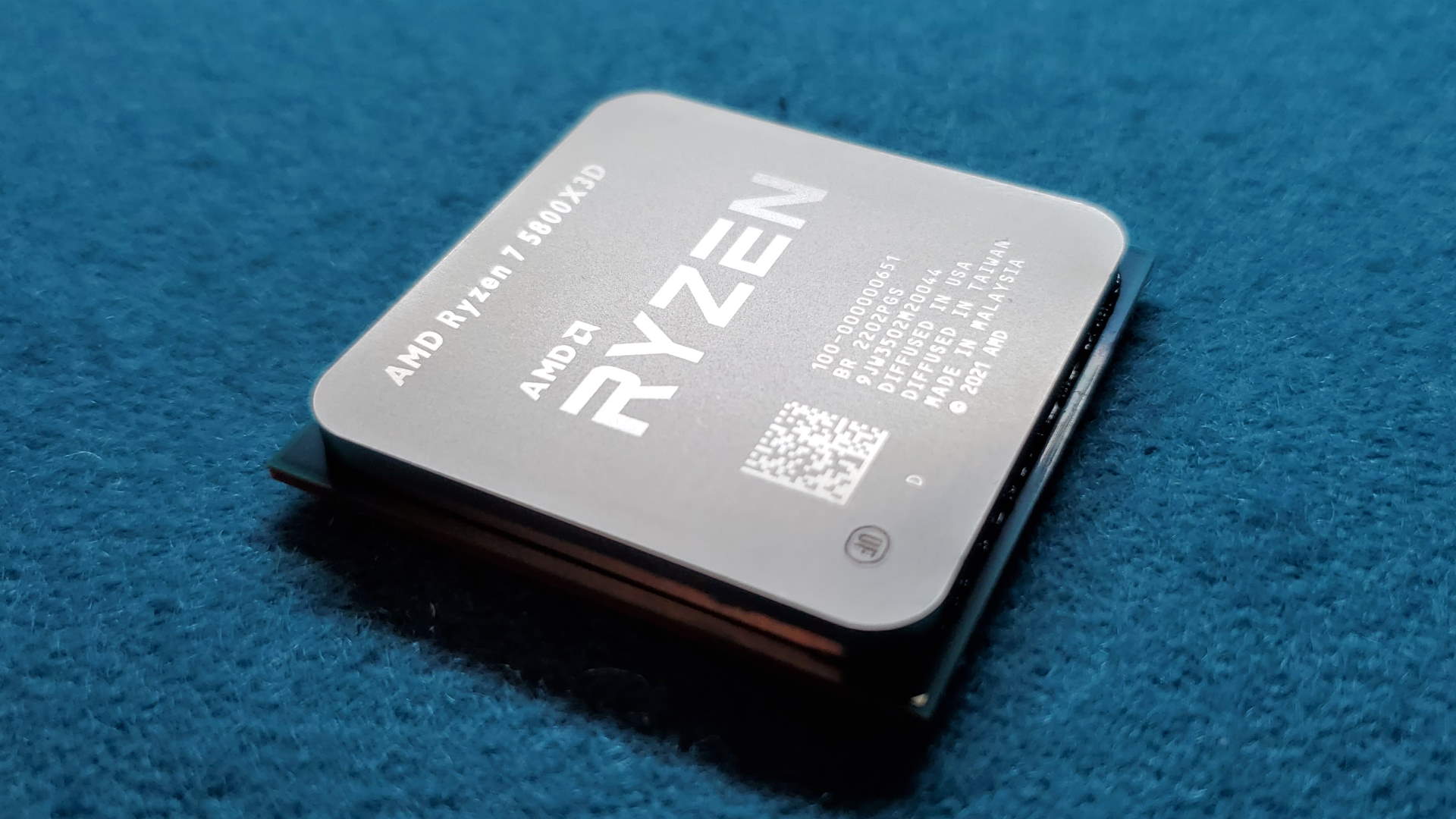An overclocker has successfully removed the integrated heat spreader (IHS) from an AMD Ryzen 7 5800X3D CPU (opens in new tab), and more importantly, the CPU lived through the procedure. The overclocker, appropriately named Madness (via sweclockers (opens in new tab)), undertook what is known as delidding. The aim is to deliver a combination of lower temperatures, higher boost clocks or better overclocking results.
The procedure involves using a heat gun to heat up the thermal interface material and then using a razor blade to pry the IHS off. This is a risky and delicate process as removing components or damaging the dies will most likely kill the CPU. In the case of Ryzen 5000 CPUs, the procedure is even more difficult due to the use of solder between the dies and IHS.
Madness then replaced the stock material with Thermal Grizzly Conductonaut. The result was a temperature drop of 10 ° C along with a drop of 8W in average power consumption. Those numbers would be welcome if it meant improved performance too, but sadly there wasn’t much to speak of, with a mere 14MHz improvement in the average clock during a gaming test, from 4436MHz vs 4450Mhz. Having said that, if AMD allowed it, the boost clock would surely be higher than maximum 4.5GHz.
The results show that delidding the 5800X3D simply isn’t worth the risk. The lowered temperatures and power consumption are definitely impressive, but without a corresponding performance gain, its not worth it. If overclocking was allowed, then lower temperatures would almost certainly add some extra headroom and make the process a little more worthwhile. But for 14MHz? Nope.
I can’t believe I’m saying this but the 5800X3D has been delidded!It doesn’t hit 90°C anymore 😀 pic.twitter.com/xV5QQfCdoEJune 25, 2022
Modern CPUs are designed to run at high temperatures and have many fine-grained mechanisms to deliver optimal performance within defined temperature and power ranges. The 5800X3D runs hotter than a 5800X due to its stacked cache design, but a load temperature of up to 90 C is not harmful to the chip. You wouldn’t want to run at 100% load at 90 for extended periods, but if its just touching 90 occasionally under heavy loads, and you’re not losing any performance, then there’s no reason to panic and rush out to delid.
A simpler solution would be to get yourself a better cooler. Obvious? Pedestrian? Incredibly boring? Yes! But at least its risk free.
So, delidding a 5800X3D will deliver a a temperature drop, lower fan speeds and give a few watts of power saving. By themselves, they aren’t compelling enough reasons to delid your 5800X3D. Unlocked overclocking would change the equation for those willing to take the risk though, and there are workarounds (opens in new tab) if you have a high end MSI motherboard.
All that being said, mad props to Madness for attempting this. Risking an expensive CPU takes guts. Although the final results aren’t impressive, if 5800X3D overclocking does become genuinely viable, then delidding would be more worthwhile. It will always remain a risky procedure though.


